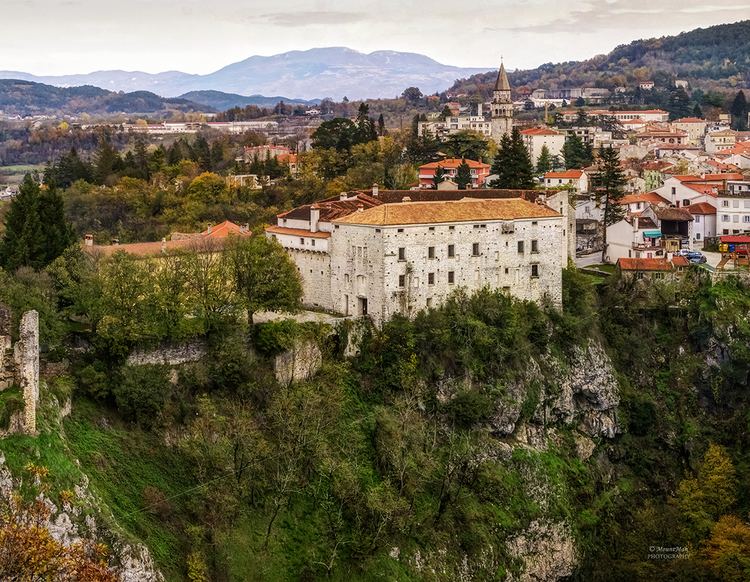Elevation 277 m (909 ft) Postal code 52 000 Area 134.9 km² Area code 052 | County Istria Time zone CET (UTC+1) Vehicle registration PU Local time Saturday 9:10 AM Team NK Pazinka | |
 | ||
Weather 17°C, Wind E at 5 km/h, 41% Humidity Points of interest Zip Line Pazinska jama, Pazinska jama, Pazin Castle, Ethnographic Museum of Istria, Pazin State Archive | ||
Pazin (Italian: Pisino, German: Mitterburg) is a city in western Croatia, the administrative seat of Istria County. It is known for medieval Pazin Castle, the former residence of the Istrian margraves.
Contents
- Map of 52000 Pazin Croatia
- Geography
- History
- Sights
- Settlements
- Famous people born in Pazin
- Climate
- References
Map of 52000, Pazin, Croatia
Geography
The town had a population of 8,638 in 2011, of which 4,386 lived in the urban settlement. In 1991 it was made the capital of the county for its location in the geographical centre of the Istria peninsula and in order to boost the development of its interior territories.
History
Pazin was first mentioned as Castrum Pisinium in a 983 deed regarding a donation by Emperor Otto II to the Diocese of Poreč. It then belonged to the Imperial March of Istria, which had originally been under the suzerainty of the newly established Duchy of Carinthia in 976, but separated together with the March of Carniola in 1040.
In the 12th century Mitterburg Castle was in possession of the Lower Carniolan count Meinhard of Schwarzenburg, who held the office of a vogt of the Poreč bishops (in Latin documents he is known as Cernogradus), and established the Pazin County (earldom). Upon his death, Pazin was inherited by his son-in-law Count Engelbert III of Gorizia (Görz) in 1186.
The Istrian contract (Razvod istarski) was written in 1325 in the Croatian language and in the Glagolitic script.
While most of Istria had gradually been annexed by Venice, Engelbert's descendant Count Albert III of Gorizia in 1374 bequested his Mitterburg estates to the Austrian House of Habsburg, who attached them to their Duchy of Carniola and gave it out in fief to various families, the last of which was the comital House of Montecuccoli from 1766. Until 1918, the town (under the name Pisino) was part of the Austrian monarchy (Austrian side after the compromise of 1867), seat of the district of the same name, one of the 11 Bezirkshauptmannschaften in the Austrian Littoral province.
In the same year, Pazin and all the Peninsula of Istria were transferred to the Kingdom of Italy. Benito Mussolini, then, introduced a fascist regime in Italy which, under the "Duce", tried to Italianize all of the region. However, most of Istria became part of Yugoslavia after World War II.
Sights
The current town was mostly built beneath the medieval fortress. The present-day Pazin Castle (Castle Montecuccoli) was rebuilt in the 15th and 16th century and disassembled in the 18th and 19th. It has been a museum since the end of World War II.
The Pazin ponor (Pazinska jama/Foiba) located under the castle was partially explored by Édouard-Alfred Martel in 1896 and is the best example of karst hydrography and morphology in Istria. Castle and a gorge inspired Jules Verne for the novel Mathias Sandorf of 1885.
Settlements
The following settlements comprise the city's administrative region:
Famous people born in Pazin
Climate
Climate in this area has high diurnal variations, and there is adequate rainfall year-round. The Köppen Climate Classification subtype for this climate is "Cfb". (Marine West Coast Climate).
